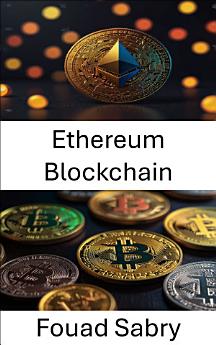Ethereum Blockchain: Decentralized Applications and Smart Contracts for the Web30 Revolution
À propos de cet e-book
Chapters Brief Overview:
1: Ethereum: Foundation of smart contracts and dApps within the Colored Coins ecosystem.
2: Cardano (blockchain platform): Proofofstake alternative influencing blockchain governance models.
3: Nonfungible token: Unique digital assets enabling personalized ownership in a decentralized world.
4: Kevin Abosch: Explores cryptoart bridging creativity and blockchain transparency.
5: Decentralized autonomous organization: Organizations governed by code, not politics or borders.
6: Tron (blockchain): Entertainmentfocused blockchain redefining digital content distribution.
7: Blockchain: The underlying technology securing Colored Coins and decentralized networks.
8: Cryptocurrency: Digital currencies powering decentralized economies and peer exchange.
9: Ethereum Classic: A split chain revealing core debates in blockchain ethics and immutability.
10: Colored Coins: Tokenization method giving realworld value to blockchainbased assets.
11: CryptoKitties: NFT game that tested Ethereum scalability and blockchain culture.
12: 0x (decentralized exchange infrastructure): Protocol enabling frictionless token trades without central control.
13: Decentralized application: Apps operating without middlemen, empowered by blockchain logic.
14: Smart contract: Selfexecuting agreements automating trust across digital interactions.
15: CryptoPunks: Pixel art NFTs that pioneered digital scarcity and collectible culture.
16: Decentralized finance: Reinventing traditional finance through open, blockchainpowered systems.
17: Cryptoeconomics: Incentive structures driving behavior and network sustainability.
18: Uniswap: Decentralized exchange reshaping liquidity and user control.
19: ERC721: Standard that defines how NFTs are created and recognized on Ethereum.
20: William Entriken: Key figure in defining ERC721, influencing the NFT movement.
21: Solana (blockchain platform): Highspeed blockchain offering alternatives to Ethereum's scalability issues.
This book is crafted for professionals, students, and enthusiasts eager to explore the intersection of technology, economics, and governance. Understanding Ethereum and Colored Coins isn't just about tech—it's about decoding the future. Let this book be your trusted guide.







